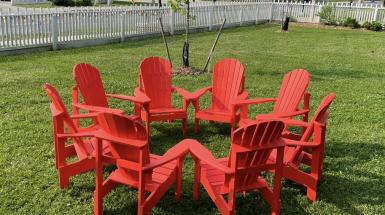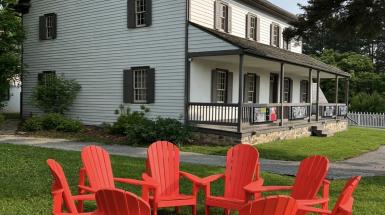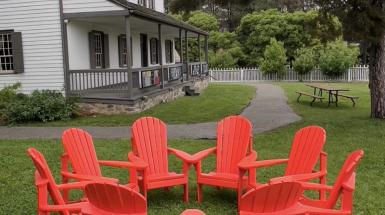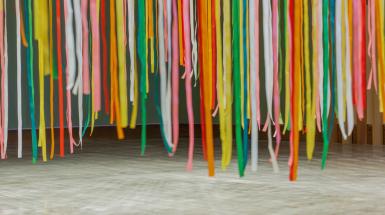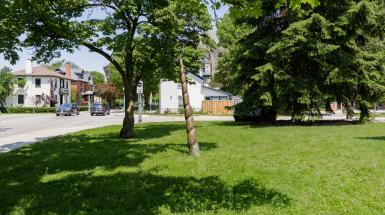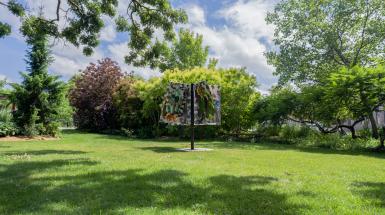
This land is my land, this land is your land
In this work’s title and materials, Don Kwan evokes iconic symbols of Canadian nationalism from pop culture. Muskoka chairs are a fixture of outdoor cottage living in Canada, and have become emblematic of connecting with nature. Inviting people to rest and enjoy the landscape, they are often drawn together around a bonfire.
At first glance, Don Kwan’s chairs echo the idea of gathering and inclusion. Arranged together in a close circle, they are surrounded by images of the Canadian landscape from coast to coast to coast, as described in The Travellers’ 1955 Canadian adaptation of Woody Guthrie’s now-controve sial folksong.
Upon closer inspection, however, the chairs are inaccessible, fastened together in a tightly closed circle. Who belongs here? "This land is my land and this land is your land" explore complexities of identity, belonging, inclusion and exclusion rooted in Canada.
"This land is my land, this land is your land". The title refers to the idea of mutual exchange and benefit between individuals or groups. In the context of this artwork, it suggests that belonging and inclusion in Canadian society should be a two-way street, with all individuals and groups contributing to and mutually benefiting. This exchange is often complex.
The audience is invited to reflect on their own sense of belonging and to engage in a dialogue about the ongoing issues of inclusion and inclusion. The artwork encourages mutual understanding and inclusivity, allowing the viewer to question their own assumptions and ultimately this tactile interactive installation welcomes and encourage us to work towards a greater mutual understanding between individuals and groups.
A third-generation Chinese Canadian, Don Kwan turns to his own experiences and challenges of being a gay, East Asian artist as a way to ground in broader conversations about identity, representations, and intergenerational memory-making in the diaspora.
Kwan regularly draws from common and powerfully symbolic found objects and forms. He redeploys them in provocative, and playful ways; delivering complex, and nuanced concepts in an open framework for interpretation that evokes both familiarity and wonder.

